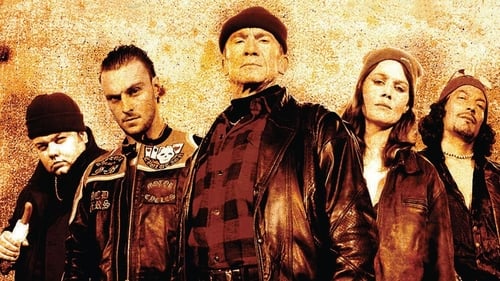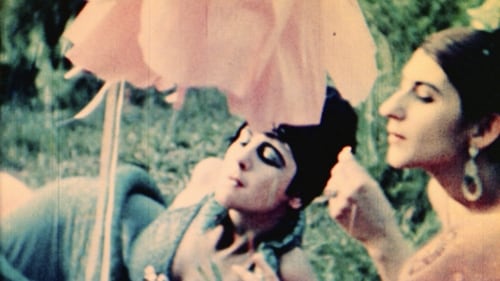Das Wunder des Schneeschuhs (1920)
Género :
Tiempo de ejecución : 1H 6M
Director : Arnold Fanck
Sinopsis
A documentary about skiing at the beginning of the century.

En este western moderno, corre el rumor de que el famoso gángster Frank Lowies escondió millones en efectivo antes de ir a la cárcel. Siguiendo los tatuajes crípticos en el cuerpo de una stripper sexy, cada sinvergüenza en la ciudad desierta de Copenhague está en la búsqueda, pero ¿dónde demonios está el dinero?

The Weavers of Nishijin captures the process of traditional textile manufacture in Nishijin.

Synchromy No. 2, synchronized to the "Evening Star" aria from Wagner's Tannhäuser, uses a statue of Venus to represent the star.

There's more to picture than meets the eye in this journey into oriental metaphysical imagery. Starting (in a very Christian manner) with the Word, the film draws an explosion of visible forms, as if a sign of the shattering of shapes in the mundane world. But time is cyclical, of course, and what was once a multitude of sensible realities must eventually return to the Word and, finally, to sheer Color. (Sound of Eye)

The feature length Normal Love is Jack Smith’s follow up to his now legendary film Flaming Creatures. This vivid, full-color homage to B-movies is a dizzying display of camp that clearly affirms Smith’s role as the driving force behind underground cinema and performance art of the post-war era. The cast includes Mario Montez, Diane de Prima, Tiny Tim, Francis Francine, Beverley Grant and John Vaccaro. Smith was known to constantly re-edit the film, often during screenings as it was still unspooling from the projector. This print has been restored under the supervision of Jerry Tartaglia and is provided by Filmmakers Co-operative in New York City.

While extracting and polishing their blocks of stone, stonecutters used to say “the stone is coming to life". This paradox provided Matsumoto with the best metaphor for what making a film is all about. In his opinion, filmmakers work images in the same way that stonecutters work stones.

'Ki or Breathing' is a spare concoction assembled from slow motion shots of nature and set to a score by the much-acclaimed Tohru Takemitsu.

Two chaotic series of images, one for each eye. Hipster living, malformed fetuses, war, arts events and pop culture stands for the material.

A short scene of a mother and her little son playing ball games on a set of steps together.

Adaptation of an avant-garde play about Rhoda, a hysterical heroine who feels oppressed by the people around her. She suffers through her birthday party, goes to see a doctor, plans a vacation, argues a lot and even breaks the fourth wall.

Documentary about the relationships between mothers and their children.

Christopher Young experiments with objects and their uses.

Santamaria and Urtigo are two bandits on the run, one is white, the other black. Santamaria is a mystical visionary and believes in the imminent coming of a purifying angel. Urtiga, his inseparable companion, is a simple-minded and ingenious man who follows Santamaria around and participates in the crimes he commits. The two bandits take over a house after kidnapping its owner and his girlfriend.

A blind masseur kidnaps young women and kills them and then make sculptures of them, while a mysterious dwarf spreading severed body parts around. Detective Akechi Kogorô investigating crimes.

Photographer Rudy Burckhardt shows us the ebb and flow of people rushing about Manhattan. Equally exhilarating in his novel approach to snap images quickly on the run, a method he inaugurated and that continues to the present day. In film, he added slow and fast motion, split-screens and superimpositions to his repertory.

A spoof of the early talkies and their supposedly wooden line readings.

Mix-mastering history, the paranoid thriller, the documentary and the landscape film, pic tells of very different fates for two sets of brothers in oppressive Philippine settings.

Debord directed his first film, "Hurlements en faveur de Sade" in 1952 with the voices of Michele Bernstein and Gil Holman. The film has no actual images; instead, it shows bright white when there is speaking and black when there is not. Long silences separate speaking parts. The film ends with 24 minutes of black silence.

Episodes in the lives of two country girls at school in Paris and their opinions.

Part AC/DC, part Jacques Derrida. An experimental film made as a response to the critical theory aspects of the filmmakers degree and academic film criticism.












